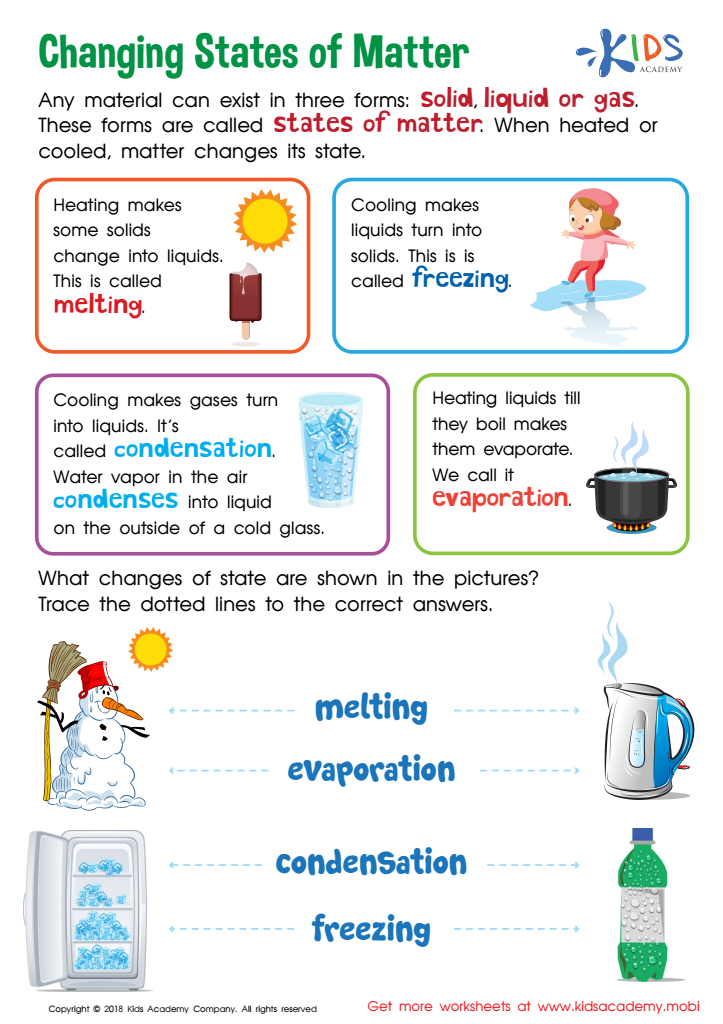Matter properties comprehension Worksheets for Kids
1 filtered results
-
From - To


States of Matter Worksheet
Question/Answer
Why is the Matter properties comprehension skill important for Grade 3 students?
The Matter properties comprehension skill is important for Grade 3 students because it lays the foundational understanding of the physical world, encouraging scientific inquiry and critical thinking. By learning about different matter properties, students begin to grasp how materials interact, leading to better problem-solving skills, fostering curiosity, and preparing them for more advanced scientific concepts in their future education.
How to test a Grade 3 student’s Matter properties comprehension skills?
To test a Grade 3 student's comprehension of Matter properties, use a combination of short-answer questions, multiple-choice questions, and hands-on activities. Ask them to identify and classify materials as solids, liquids, or gases, describe characteristics (e.g., hardness, flexibility, ability to flow), and conduct simple experiments to observe changes in states of matter (melting, freezing, evaporation).
What are some effective activities to train students’ Matter properties comprehension skill when teaching them about Physical Science?
Effective activities include hands-on experiments like mixing substances to observe changes, creating density columns with liquids of different densities, and using heat to investigate states of matter (melting, boiling). Incorporating interactive simulations to visualize atomic and molecular structures, and conducting sorting games to classify materials based on properties like magnetism, conductivity, and solubility, also significantly enhance comprehension.
 Assign to the classroom
Assign to the classroom


.jpg)









